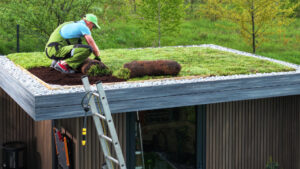By Mayra Rodriguez, Plymouth Marine Laboratory
Aside from hotter summers and melting glaciers, climate change is transforming how, when and where rain falls. This challenges much of the world’s sewer systems, especially with the added strains of population growth and increased urbanization.
Victorian-era sewage systems were simply not designed for the climate we are heading towards. This has major implications for public health, water quality and urban living.
The increasing population means sewers are sometimes overwhelmed without any rainfall at all. Then, add climate change to the mix. Heavier downpours are becoming more common, which spells trouble for sewer systems that simply cannot cope with increasing volumes of water. One type of system, called a combined sewer system – the predominant type in the United Kingdom and Europe – is especially vulnerable.
These systems carry wastewater from homes and storm water from streets in the same pipes. When it rains heavily, the pipes can become overwhelmed, resulting in permitted discharges of untreated wastewater from combined sewer overflows (CSOs). This untreated overflow discharges into the ocean, rivers and streams, pollutes the environment, threatens wildlife and harms public health.
And this problem is only expected to get worse. Results from my doctoral research show climate change could triple sewage overflow discharge into waterways by 2099.
But there is a ray of hope: “green infrastructure,” which mimics nature by retaining or slowing down the flow of rainwater into the environment, allowing it to evaporate or soak away. Examples include green roofs, permeable pavements and rain gardens which already exist in many U.K. cities and towns, including London and Sheffield.

Instead of relying solely on traditional pipes and tanks to remove rainwater, green infrastructure solutions manage rain where it falls. Green roofs retain rainwater and help increase evaporation. Permeable pavements allow water to seep through into the ground instead of running off into sewers.
Bio-retention cells or “soakaways” are landscaped areas like rain gardens that collect and filter stormwater before releasing it slowly into the ground or drainage systems. Wetlands and rainwater harvesting tanks also reduce the total amount of water going into sewers or delay the entrance of water into them.
My team’s research explores how effective these solutions could be and highlights how best to plan green infrastructure improvements and deal with increasing rainfall.
Our study simulated how sewer systems would perform with and without green infrastructure under future rainfall patterns, using climate models. We found that green infrastructure improves resilience to climate change but has limits: while reducing the severity of combined sewer overflows, it could not fully offset the effects of climate change even with maximum deployment. However, different combinations of green infrastructure show promise.
Our study highlights that these solutions need to be carefully designed to suit the setting and context. If incorrectly located, they can increase the rainwater discharge duration following a storm, because they release the retained water into the system while the sewer is still overwhelmed, and can thus extend the period of sewer discharge.
The effectiveness of green infrastructure varies across different parts of the sewer system. Solutions need to be tailored to specific locations and conditions.
Measurements are also critical, because what gets measured, gets managed. The magnitude of the problem can only be accurately understood by measuring both the sewer overflow discharge and what is going on with our sewer systems. Otherwise, we are trying to solve a problem that we do not have parameters for.
Good computer models play a crucial role in helping researchers and urban planners understand how our system works. Models offer a cost-effective way to test different interventions, but they need to be representative of reality. An inaccurate model can lead to big differences in how effective these solutions seem, affecting decisions on how to manage storm water.
Future rainfall patterns are critical too. Sewers’ performance depends heavily on the characteristics of rainfall, which are influenced by climate change. More intense and longer storms might overwhelm even the most well-designed green roofs or permeable pavements.
How to build resilient sewers
To address the increasing challenges facing the U.K.’s sewer system, cities and towns must invest in green infrastructure to reduce runoff and improve water quality. This also provides other benefits – such as keeping urban areas cool, and providing green spaces for communities.
Traditional infrastructure needs an upgrade to modernize existing pipes and treatment facilities to handle higher volumes of water. This not only means bigger pipes but smarter systems.
Local plans should depend on the particular needs of each neighborhood. Solutions can be adapted accordingly, while also considering the catchment as a whole.
More accurate computer models need to be developed and adopted by infrastructure managers, researchers and consultancies. With trusted and robust models, we can prepare better and prioritize resources more effectively.
Future climate scenarios are uncertain, so plans must be flexible and aim for a safe-to-fail approach. Urban planners, policymakers and communities need to work together to install well-designed solutions.
The challenges posed by climate change are vast, but not insurmountable. By embracing innovation and planning carefully, cities and their sewers can adapt to the new realities of our changing world.
Mayra Rodriguez is a postdoctoral researcher in Earth observation science at the Plymouth Marine Laboratory.
This article is republished from The Conversation under a Creative Commons license. Read the original article. Banner photo: Dirty water flows from a pipe into a river. (iStockphoto image).
Sign up for The Invading Sea newsletter by visiting here. To support The Invading Sea, click here to make a donation. If you are interested in submitting an opinion piece to The Invading Sea, email Editor Nathan Crabbe at ncrabbe@fau.edu. To learn more about gray-green infrastructure, watch the video below.



